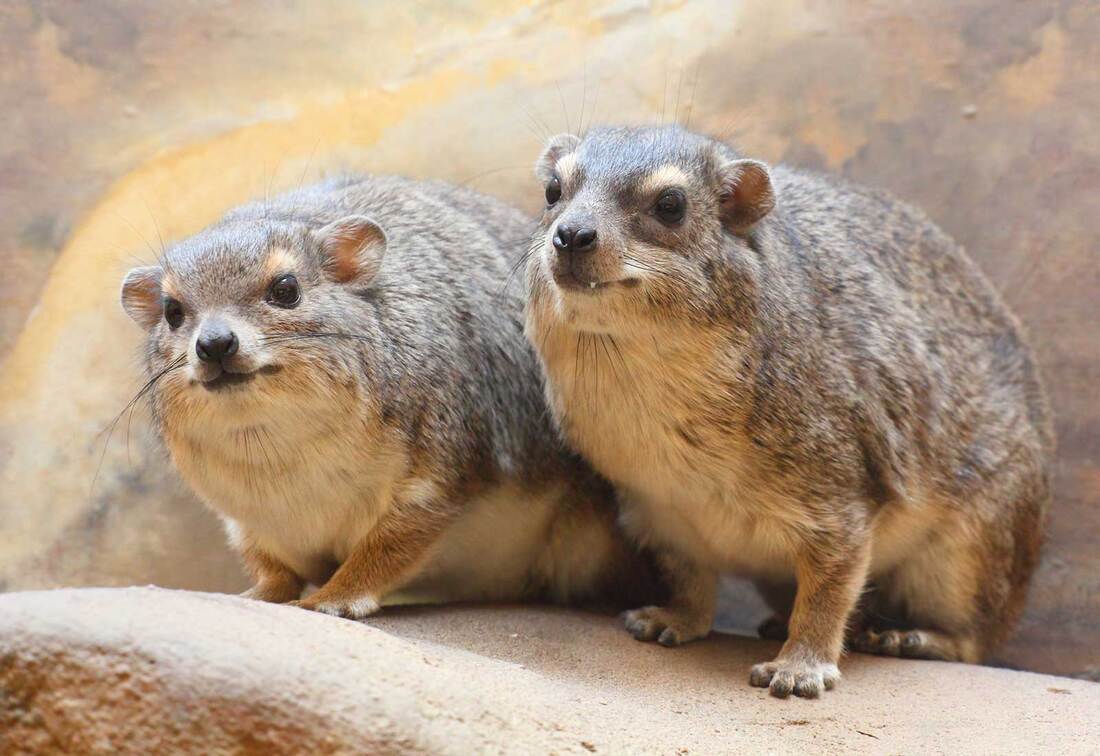|
Did you know the rock hyrax, though it looks kind of like a guinea pig, is actually most closely related to elephants and manatees?
Hyraxes, native to Africa and the Middle East, have teeth, toes, and skull structures similar to those of an elephant’s. This is because hyraxes and elephants share a common ancestor. Hyraxes have strong, flat molars for grinding food, and they have two incisors that grow out to be tiny tusks. As the name suggests, rock hyraxes spend much of their time among the rocks, particularly on cliffs and hillsides. Okay, what's all this about hyraxes, elephants, and manatees? Let's dig deeper. Throughout the late Eocene (56 to 34 million years ago), many species of hyrax-like mammals (called hyracoids) thrived in Africa and the Middle East. Some were as small as a mouse, others weighed almost 3,000 pounds (1,360 kg). The descendants of these hyracoids evolved in several diverging directions. Some became the small, modern hyraxes of today. Others moved into the water, gradually becoming the sirenians (manatees and dugongs), and some became the various elephants. Sources often state that hyraxes are the closest relatives to the elephant family, but DNA evidence suggests that the manatees and dugongs might be closer. Still, they all share a common ancestor, and hyraxes have many resemblances to elephants, including their toenails, the shapes of many of their bones, the sensitive pads on their feet, small tusks, excellent hearing, good memory, and sophisticated brain functions compared to other mammals of similar size.
1 Comment
Jacob Wright
3/4/2024 03:49:47 pm
Powerful first image, really kept me reading!
Reply
Leave a Reply. |
Stan's Cogitations
Everyone needs a creative outlet. That's why I write. Archives
July 2024
|


 RSS Feed
RSS Feed